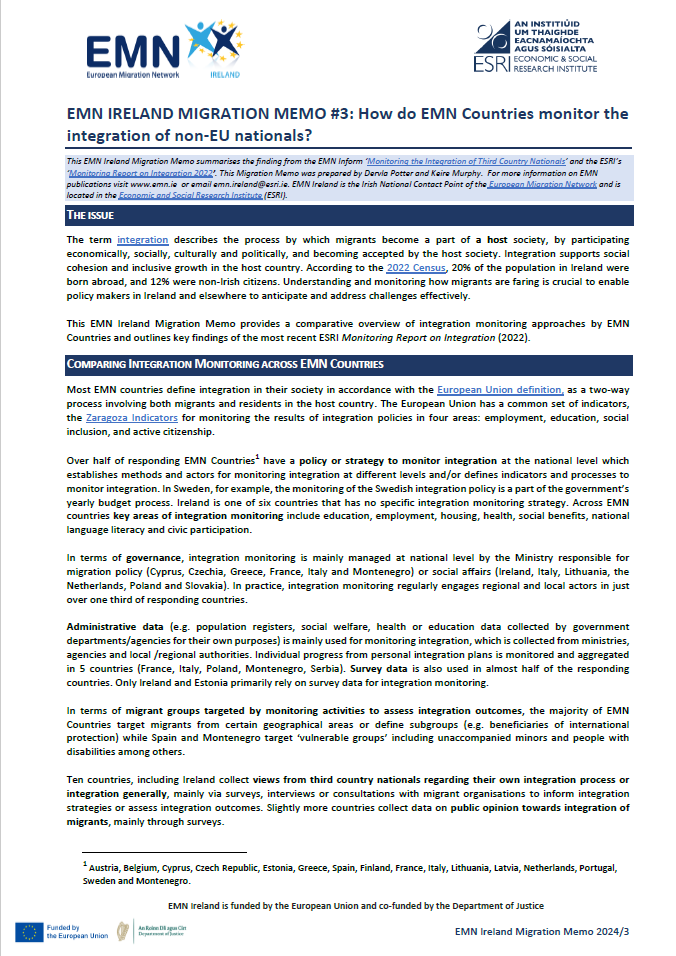According to the 2022 Census, 20% of the population in Ireland were born abroad, and 12% were non-Irish citizens. Understanding and monitoring how migrants are faring is crucial to enable policy makers in Ireland and elsewhere to anticipate and address challenges effectively.
Over half of responding EMN Countries have a policy or strategy to monitor integration at the national level which establishes methods and actors for monitoring integration at different levels and/or defines indicators and processes to monitor integration. In Sweden, for example, the monitoring of the Swedish integration policy is a part of the government’s yearly budget process. Ireland is one of six countries that has no specific integration monitoring strategy.
Good practices identified included surveys specifically targeted at migrant populations, monitoring the integration of second-generation migrants, the use of dedicated and permanent teams, public access to the results of monitoring activities, and the use of centralised indicators.
The term integration describes the process by which migrants become a part of a host society, by participating economically, socially, culturally and politically, and becoming accepted by the host society. Integration supports social cohesion and inclusive growth in the host country. According to the 2022 Census, 20% of the population in Ireland were born abroad, and 12% were non-Irish citizens. Understanding and monitoring how migrants are faring is crucial to enable policy makers in Ireland and elsewhere to anticipate and address challenges effectively.
This EMN Ireland Migration Memo summarises the findings from the EMN Inform ‘Monitoring the Integration of Third Country Nationals’ and the ESRI’s ‘Monitoring Report on Integration 2022’.


